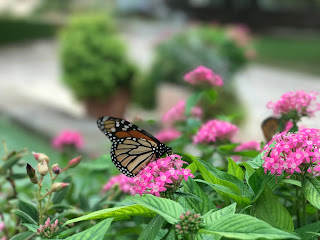This movie is a two-for-one. The first half of Life is Beautiful (1997 winner of three Academy Awards) is a comedy-romance beginning with a straight-from-silent-films convertible with failed brakes taking our protagonist, Guido, careening downhill into a village lined with townspeople awaiting the arrival of Italy's king and queen. Instead they get Guido, waving frantically at them to clear the road. They respond with Nazi salute. That's a clue where this film is heading, no brakes applied, either.
A love story soon ensues between Guido and the village's school teacher, Dora, who is engaged to the up-tight town magistrate. It's no contest. Dora is beguiled by Guido's magical nature, which is alone is worth the price of admission to see Life is Beautiful part one. The sparse, pointed poetry of visual tricks build believably with grace and timing. There is a series of traded hats, cracked upon the magistrate's head eggs and keys dropped from the heavens. This is a master class in visual gags that drive the plot forward with mechanical precision.
The second half of Life is Beautiful is set six years or so after Dora dumps the magistrate and rides off with Guido atop Robin Hood, the horse who's been painted with anti-Jewish slurs. The couple's son, Joshua, appears ready to start school when he and his father are taken by force to a concentration camp along with the other Jews in the village.
Joshua becomes the story's hero. Joshua's journey from innocence into the unknown is through a prison where he and others await their murder at the hands of Nazi thugs. Is he aware of where he is? His father's purpose in life becomes to convince Joshua he is safe instead of in danger, that he is playing in a fantastic game instead of awaiting execution.
This killing ground is where Guido's magic is put to its greatest test. Guido uses the same idealism that he used to win over Dora's heart to shield their son from fear. To keep his son occupied, Guido concocts a contest in which Joshua has been signed up to play. He invents points that can be accrued by being quiet or by hiding. The aim is to win the prize of --what else would a kid want--a life-size army tank.
Joshua may or may not be entirely distracted from the pain and squalor by the game. He plays the game and by doing so, he survives hiding in his new surroundings, the hunger for food and worst of all, separation from his mother Dora, who is with the women prisoners. Joshua shows signs of giving up on the game, but he is drawn back by Guido's trumped-up contest when his father tells him that he is just a few points short of winning, never comprehending the danger he is in.
The boy's hero journey from the corridors of hell back to freedom comes from his faith and trust in his father's persuasive coaching and winking-eye humor.
When the war ends, the Nazi's flee like roaches and the camp is liberated, Joshua is the first to greet the Allies. He is lifted onto the army tank his father had promised awaited him, the winner of the contest. Final Score: Innocence- One, Nazi Thugs -Zero.
Life is Beautiful's first half convinces you that magic is anything but magical; Instead, you see that it is made by the hands of artful humans. The second half of the film shows you how vitally important it is to protect --by any means-- a child's heart from fear. When everything is taken from you-- by circumstances as banal and dead to all imagination as a concentration camp-- Guido's wit, and how he used it, show us that our minds contain weapons more powerful than any used against us.


